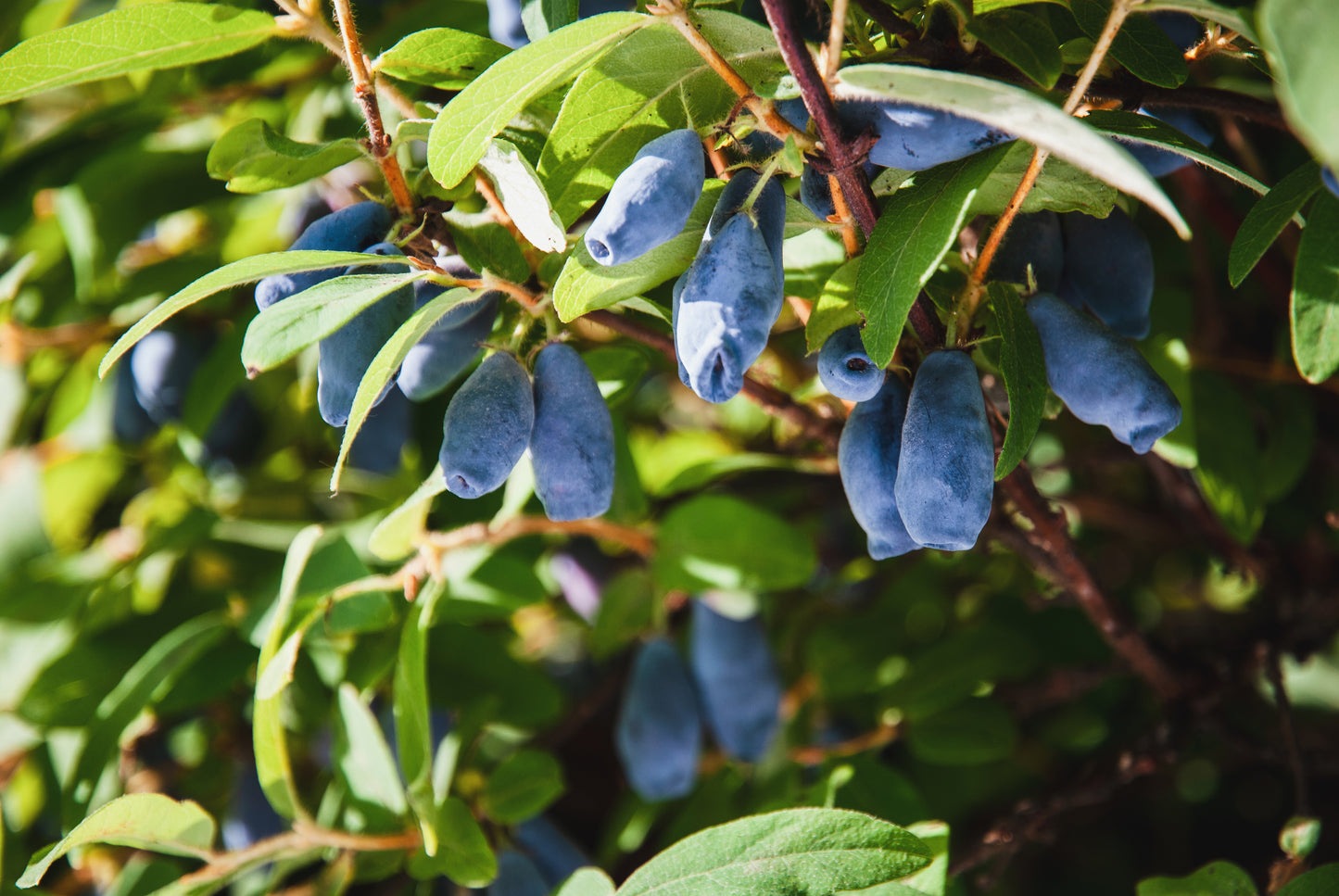Honeyberry - Bare Root
Honeyberry - Bare Root
Out of stock
Couldn't load pickup availability
Read more information and download the Savanna Institute Honeyberry Growers Guide Here.
WE DO SHIP BARE ROOT PLANTS. Shipping will be calculated and charged at payment.
Suited for USDA Plant Hardiness Zones: 2-6
Bare roots can be shipped March-May.
Honeyberries must be ordered in Bundles of 15.
Our Honeyberries measure 10''-18''.
Will it thrive?
Stop! Before you buy these honeyberries....are you sure they will thrive in your soil and climate? To be sure, you should prepare a Compass Report for your farm at CanopyCompass.com.
Honeyberry Descriptions
Honeyberry Cultivars
Honeyberries Need Two Pollen Compatible Cultivars Together to Produce Fruit. All Three of These Cultivars are Able to Pollenate Each Other.
Aurora
Origin: University of Saskatchewan
Fruit Qualities: Sweet, medium sized, good taste
Plant Characteristics: Early ripening, upright spreading, higher yields, ideal for you-pick
Tundra
Origin: University of Saskatchewan
Fruit Qualities: Sweet/tart, small, firm
Plant Characteristics: Early ripening, smaller spread, good for mechanical harvest
Indigo Gem
Origin: University of Saskatchewan
Fruit Qualities: Sweet/tangy, small, good for juice/wine
Plant Characteristics: Early ripening, low spreading, good for mechanical harvest
Growing Recommendations
Instructions for Planting Bare-root Honeyberries
When Your Trees Arrive
-
Plant bare-root trees before they break dormancy (buds begin to swell or open).
-
Your trees will arrive wrapped in a plastic liner with the roots kept damp with moist sawdust.
-
Keeping trees cool before planting is essential. 40-50 degrees is a good target.
-
If you cannot plant them within a week or keep them cool, temporarily plant the bundle of trees in a bucket and cover it with a medium such as peat moss.
Site Preparation
-
If planting into existing sod, make sure you kill any tall fescue, orchard grass, brome, or alfalfa within
-
a few feet of the planting area.
-
A 3% or higher concentration of Roundup will work if applied in the morning of a warm sunny day (70F or higher if possible).
-
Re-seed the area with a turf-type mix of perennial ryegrass and fine-leaved fescue such as creeping red fescue, hard fescue, Chewings fescue, and medium Dutch white clover.
-
For broadcasted seed, seed each grass at 10# per acre and clover at 1-2# per acre.
-
Lay out and flag the field beforehand, using different colored flags for alternate rows. Straight rows will be easier to mow in future years.
Planting
-
Keep trees in the shade always, and keep the roots covered and moist.
-
Take just a few trees at a time out of the bag and put them in a five-gallon bucket with enough water to cover the roots. Note: This is only at the planting time; do not leave the roots soaking/fully submerged for an extended period.
-
Dig a hole that accommodates the root system without crowding, folding, or bending roots around the sides of the hole.
-
Prune off stringy, dangling roots that hang too far below the root mass. Hold the tree with one hand and backfill with the other as you plant.
-
Firm the soil around the tree first with your hand, then your toes—not your heel.
After Planting
-
Water the trees the first year, any time you go more than a week or two without at least an inch of rain.
-
Weed control is very important. Only a trained professional should apply chemicals. Your local NRCS office should have an up-to-date list of licensed applicators.
-
Using weed mats or landscape fabric cut into 3x3 foot squares is an excellent alternative to chemicals.
-
Use 6” turf staples to secure the corners and edges of the weed barrier.
-
Keep the grass between the trees short, especially while shelters are on the trees. Tall grass/weeds use a lot of moisture and provide a habitat for mice. Mice nesting inside tree shelters almost always girdle the trees, which will kill them.
We recognize these factors may be overwhelming, but we are here to offer support and assistance on your tree-planting journey! Please schedule a call if any of these instructions need clarification or if you have any questions or concerns.







